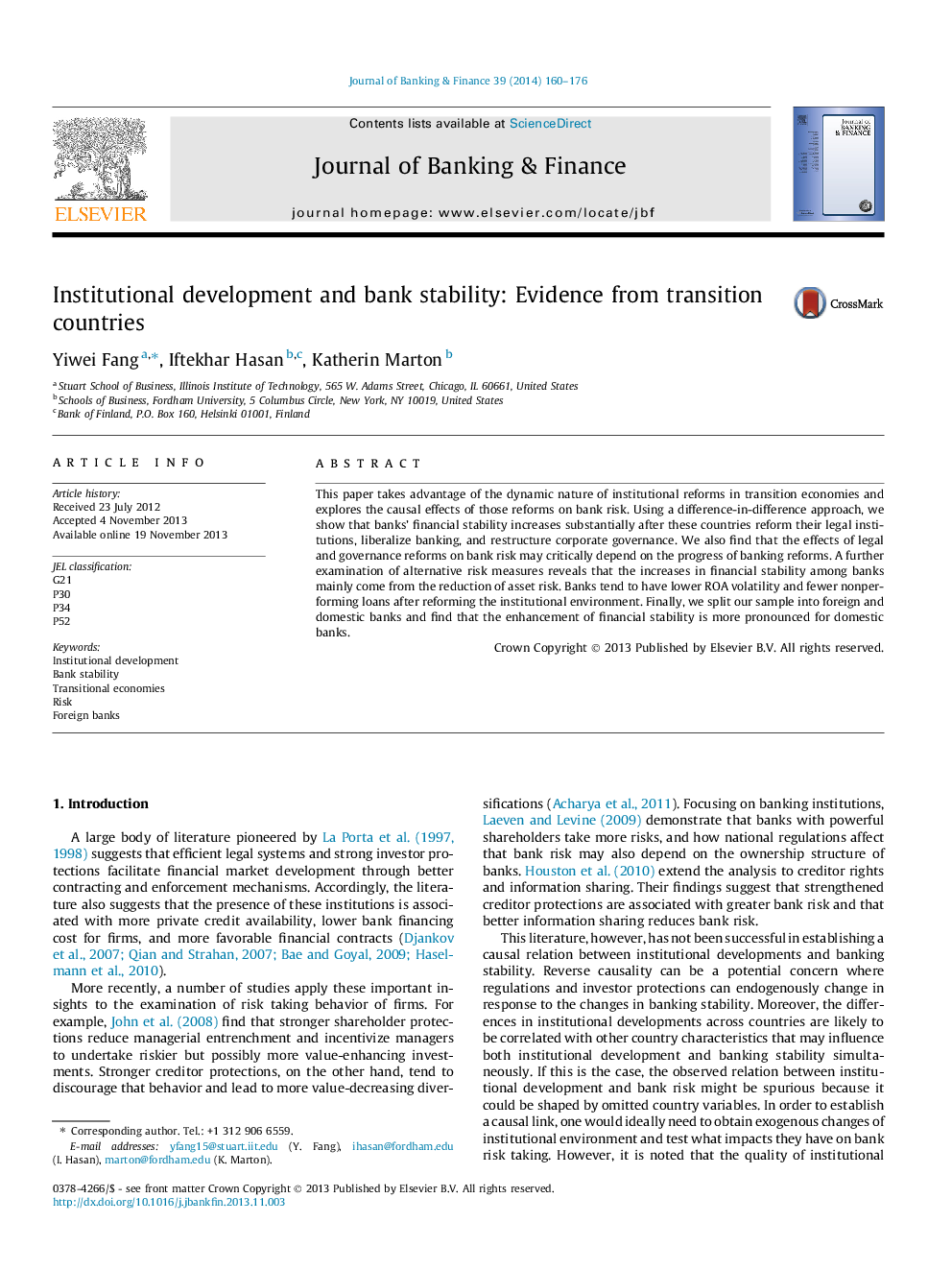| Article ID | Journal | Published Year | Pages | File Type |
|---|---|---|---|---|
| 5089090 | Journal of Banking & Finance | 2014 | 17 Pages |
Abstract
This paper takes advantage of the dynamic nature of institutional reforms in transition economies and explores the causal effects of those reforms on bank risk. Using a difference-in-difference approach, we show that banks' financial stability increases substantially after these countries reform their legal institutions, liberalize banking, and restructure corporate governance. We also find that the effects of legal and governance reforms on bank risk may critically depend on the progress of banking reforms. A further examination of alternative risk measures reveals that the increases in financial stability among banks mainly come from the reduction of asset risk. Banks tend to have lower ROA volatility and fewer nonperforming loans after reforming the institutional environment. Finally, we split our sample into foreign and domestic banks and find that the enhancement of financial stability is more pronounced for domestic banks.
Related Topics
Social Sciences and Humanities
Economics, Econometrics and Finance
Economics and Econometrics
Authors
Yiwei Fang, Iftekhar Hasan, Katherin Marton,
